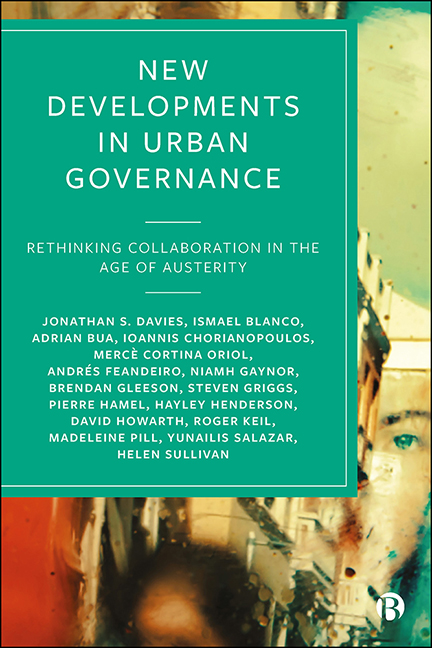Book contents
- Frontmatter
- Contents
- List of Figures and Tables
- Acknowledgements
- Introduction
- 1 Crisis and Austerity in Eight Cities: An Overview
- 2 Collaborative Governance After the Global Economic Crisis
- 3 Austerity Governance, Political Resistance and Urban Transformation
- 4 Rescaling through Austerity Governance
- 5 The Local State in Austerity Governance
- 6 Urban Cultural Diversity and Economic Migration in Austere Times
- 7 Conclusion
- Afterword: From Austerity to COVID-19 and Beyond
- Notes
- References
- Bibliography of Working Papers
- Index
1 - Crisis and Austerity in Eight Cities: An Overview
Published online by Cambridge University Press: 15 September 2022
- Frontmatter
- Contents
- List of Figures and Tables
- Acknowledgements
- Introduction
- 1 Crisis and Austerity in Eight Cities: An Overview
- 2 Collaborative Governance After the Global Economic Crisis
- 3 Austerity Governance, Political Resistance and Urban Transformation
- 4 Rescaling through Austerity Governance
- 5 The Local State in Austerity Governance
- 6 Urban Cultural Diversity and Economic Migration in Austere Times
- 7 Conclusion
- Afterword: From Austerity to COVID-19 and Beyond
- Notes
- References
- Bibliography of Working Papers
- Index
Summary
Chapter 1 focuses on how the eight cities encountered, worked with and against austerity in the period after the GEC. It begins by providing a flavour of the histories and traditions which contribute to explaining how austerity was experienced and mediated. It then turns to a discussion of Athens, Baltimore, Dublin, Leicester and Montréal, where more-or-less harsh forms of forms of austerity were implemented in the decade after GEC. It then looks at the three cities which, in different ways, provide a contrast with the story of austerity. These are Barcelona, Melbourne and Nantes. It is from these cities, primarily, that positive lessons emerge for charting governing directions beyond austerity. Chapters 2 and 3 build further on these reflections.
Urban histories and traditions
The eight cities are rooted in very different political systems and traditions. For example, the military coup in Greece (1967–1974) and the Francoist dictatorship in Spain (1939–1975) created highly centralized administrations characterized by repression and the suppression of civil society, which nevertheless survived underground and played crucial roles in the democratic transitions of the 1970s. In contrast, the modern welfare state elsewhere emerged much earlier, for example in Australia or in the United Kingdom after the Second World War, to prevent recurrence of the Great Depression and in response to political demands raised by the working class. While we do not analyse governance trends through the twentieth century, these examples capture something of how the scope for democratic practices, like participation, varied in the aftermath of the war.
By the late 1970s and early 1980s the cases had converged to some extent, fitting the model of contemporary capitalist welfare states in different ways (for example Fordist, neo-Fordist or peripheral Fordist). At different points in the 1980s and 1990s, they all experienced periods of retrenchment and restructuring, pursuing marketization agendas that clashed with previous welfare policies and institutional settlements. Some pursued structural adjustments to financial and governance systems in concert with multilateral organizations like the EU and others were influenced by the close ties between Ronald Reagan (USA) and Margaret Thatcher (UK), who enforced (and encouraged abroad) policies of industrial retrenchment, weakened the powers of unions, restructured state apparatuses at all scales (see Chapter 4) and squeezed municipal resources.
- Type
- Chapter
- Information
- New Developments in Urban GovernanceRethinking Collaboration in the Age of Austerity, pp. 18 - 30Publisher: Bristol University PressPrint publication year: 2022



